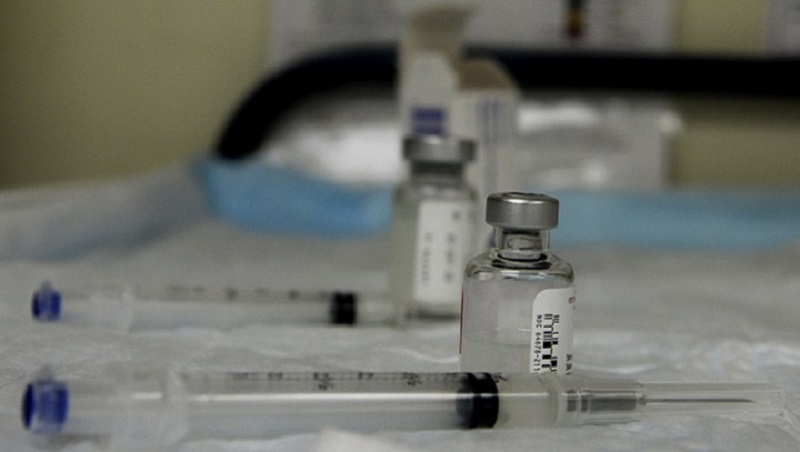Researchers discovered that injecting inactive flu virus directly into solid tumors triggered a systemic anti-tumor immune response. Thus, seasonal flu vaccines or other inactivated virus vaccines could be repurposed as agents that convert immune “cold” tumors into immune hot ones.
Newman and colleagues found that influenza infection, which is respiratory virus that infects the lungs, improved the survival of mice with tumors in the lung. Indeed, the infection was as effective at reducing the number of tumors as was treatment of the mice with an antibody targeting the immune checkpoint protein PD-1. Inspection of data for more than 34,000 lung cancer patients showed lower mortality in patients who had been hospitalized for influenza virus infection while having lung cancer. These results suggested that influenza infection might stimulate an immune response that also targeted the cancer.
The mouse experiment used animals injected with melanoma cells that had colonized the lung. Melanoma is not a cancer of lung cells; it is a skin cancer. So, the researchers tested for anti-tumor effects of injecting active influenza virus into melanoma tumors in the skin of the mice. Injection of active, live influenza virus did not reduce growth of the melanoma tumors in the skin. However, intratumoral injection of influenza virus that had been subjected to high heat, rendering the virus inactive and noninfectious, reduced tumor growth and increased the survival of the mice.
Evaluation of the immune components of the tumor microenvironment revealed infiltration of virus-presenting dendritic cells and CD8+ T cells into the tumor, as well as cytotoxic T cells specific for the tumor cells. Thus, the inactivated virus triggered both an anti-viral and an anti-tumor immune response. Importantly, the anti-tumor immune response was systemic: Injection of one tumor reduced growth of tumors that had not been injected. Additionally, this systemic anti-umor immune response was observed with intratumoral injection of the inactivated virus into tumors from breast cancer cells, indicating that the response was not unique to the melanoma tumors. The anti-tumor immune response also occurred in mice that had previously been infected with influenza virus and that had cleared the virus.
The virus used so far was an engineered virus specially designed so that the researchers could track the mouse immune response to the virus. Seasonal flu vaccines are similar to the heat-inactivated engineered virus. Indeed, intratumoral injection of the vaccine used in seasonal flu shots triggered anti-tumor immunity in the mice with multiple injections producing a greater reduction in tumor growth. Additionally, intratumoral injections of the seasonal flu vaccine combined with the anti-PD-1 therapy almost completely eliminated tumor growth. The injection of the flu vaccine into the tumors also protected the mice from influenza infection in the lungs. So, the vaccine still worked against the flu virus even though it was injected into a tumor instead of intramuscularly.
Analysis of the immune cells in the tumors showed that intratumoral injection of the seasonal flu vaccine converted the immune cold tumors into immune hot tumors. The tumors had a high proportion of dendritic cells presenting tumor antigens and anti-tumor cytotoxic CD8+ T cells. The ability of the flu vaccine to reduce tumor growth when injected into the tumors required CD8+ T cells, indicating that the injected inactivated virus was not simply causing tumor cell death. The immune response was critical for anti-tumor response.
Intriguingly, the vaccine had to contain only the inactivated virus. It could not contain additional chemicals, called adjuvants, to boost the immune response. When adjuvant was also injected, no anti-tumor immune response occurred and tumor growth was not limited. Analysis of the immune cells in the injected tumors showed that the flu vaccine with adjuvant triggered a response of B cells, rather than T cells. In contrast, the seasonal flu vaccine with only the inactivated virus triggered almost entirely a T cell response in the tumors. Additionally, the vaccine with adjuvant stimulated the accumulation of large proportion of regulatory B cells, which inhibit the function of cytotoxic T cells. Blocking the B cell response resulted in a reduction in tumor growth in response to intratumoral injection of the flu vaccine with adjuvant. Thus, the B cell response, which produced antibodies against the virus, impaired the anti-tumor T cell response.
This study will invigorate investigation into microbial-based cancer treatments. This study showed that seasonal flu vaccines without adjuvant effectively stimulated an anti-tumor immune response as well as produced protection against influenza infection in mice. The correlative lung patient data are encouraging that such a strategy will also work in humans. It is possible that other inactivated viral vaccines can be repurposed to promote solid tumor immune responses or that specific viral vaccines will be needed for different types of tumors. Inactivated viral vaccines injected directly into solid tumors may increase the number of patients who respond to immunotherapies.
Highlighted Article
J. H. Newman, et al., Intratumoral injection of the seasonal flu shot converts immunologically cold tumors to hot and serves as an immunotherapy for cancer. Proc. Natl. Acad. Sci. U. S. A. (30 December 2019) DOI: 10.1073/pnas.1904022116
Also of Interest
Cite as: N. R. Gough, Using Flu Vaccines to Treat Cancer. BioSerendipity (2 January 2020) https://www.bioserendipity.com/using-flu-vaccines-to-treat-cancer/

